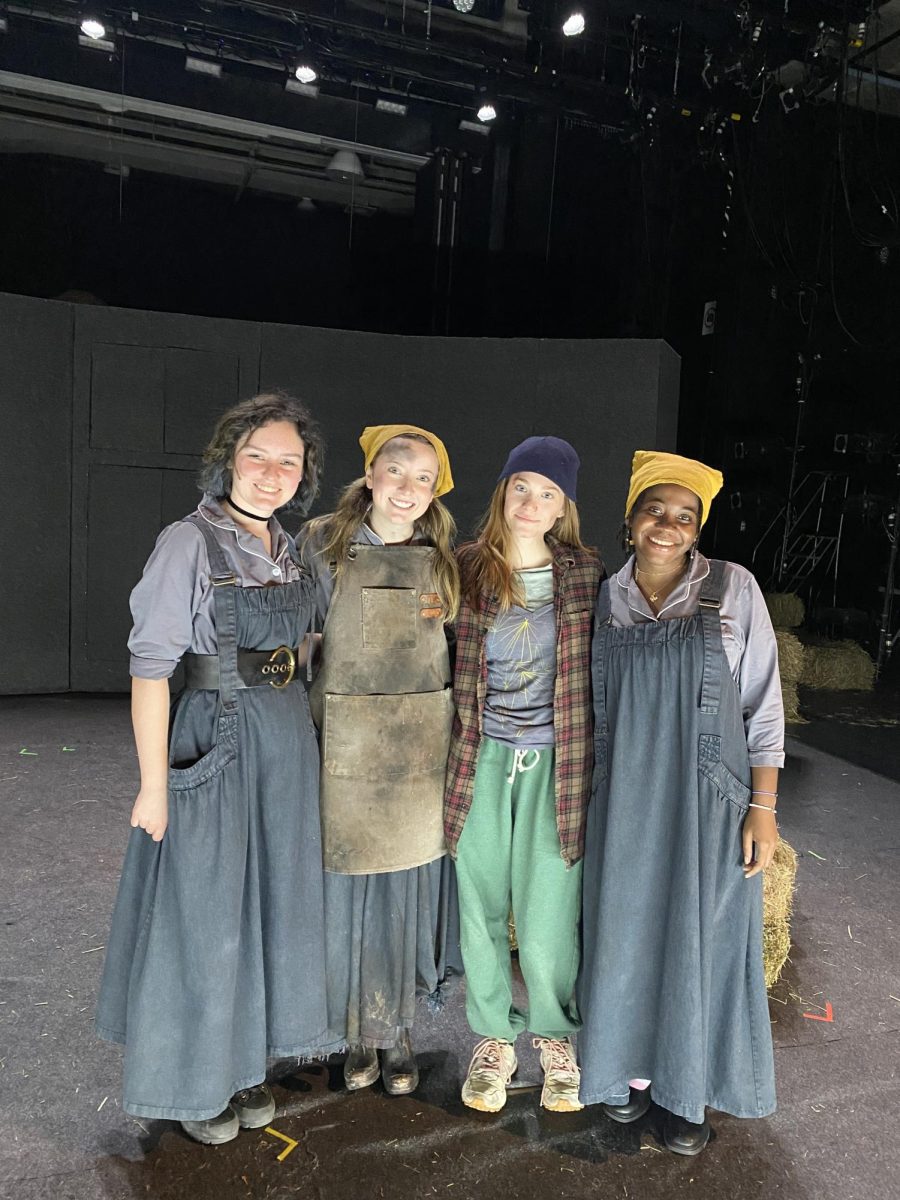A ten-foot-tall haystack entered the Brehmer Theater for the Colgate University production of “The Good John Proctor,” written by Talene Monahon. The production’s premiere took place on Friday, April 12, and was performed throughout the weekend. The play, set in pre-witch trials in Salem, Mass., serves as a prequel to the extraordinary events that take place in “The Crucible,” by Arthur Miller. It delves into the inner lives of the four young girls involved in the witch trials: Abigail Williams, Betty Parris, Mary Warren and Mercy Lewis, and gives context to what might have caused such an unbelievable event.
Although it is historical fiction, the production featured several surrealist elements, such as the aforementioned haystack, as well as projected visuals.
Junior Hannah Goff, an assistant director of the production, commented on the projections, a visual element that was seen on a screen placed behind other physical aspects of the set.
“Yana Biryükova’s projections allow us to visualize the recurring themes of magic, the woods, sexual awakening and physical and emotional decay through videos of goats, apples, birds, stars, flame and omnipresent fog,” Goff said.
There were also modern elements integrated into the production, such as contemporary language, clothing and humorous props, like a mixer used to churn butter. These modernized elements helped make the historical aspects of the show relatable to younger generations.
“Though these girls wear Puritan-style bonnets and churn butter, they speak with a familiar vernacular and profanity,” Goff said. “We relate to their dreams of flying, playing hide-and-seek, socializing with stuffed animals, struggling to find the words to describe mature topics and longing for acceptance as preteens.”
Despite some elements being fictionalized, senior Izzy Malone, who played Mary Warren, commented on the truth behind the story.
“I want the audience to know that a lot of the material is based on real life accounts during the Salem witch trials,” Malone said. “In ‘The Crucible’ and other retellings of the Salem witch trials, authors often paint John Proctor as a victim and the four girls, especially Abigail, as jealous, crazy women. In reality, Abigail was just an 11 year old girl who was severely taken advantage of and abused by a 60 year old man. In my opinion, the play has a completely different narrative when the historical perspective is taken into account.”
Goff also emphasized the importance of historical accuracy when preparing for the play.
“I worked alongside Adrian Giurgea [Director] and Max Rubinstein [Dramaturg] to build a thorough understanding of the play and determine what story we wanted to tell,” Goff said. “To contextualize the play, we utilized various resources, such as ‘The Witches: Salem, 1692’ by Stacy Schiff [and] ‘Why I wrote ‘The Crucible’’ by Arthur Miller.”
In addition to being historically accurate, the play also does an excellent job of capturing the essence of girlhood and grappling with mature themes at a young age.
“I would say my favorite scene is the final woods scene. It’s definitely the most action packed scene in the play, and I think all of our energy really culminates into this final scene. It’s also one of the heavier scenes emotionally, specifically with Abigail’s abortion,” Malone said. “I love this scene because we see the girls having fun and feeling free in the woods, but also see the really heavy material with Mary and Abigail.”
Senior Elisabeth Hartke commented on one of the ending scenes, in which Mary Warren directly addressed the audience, which proved to be an effective theatrical tool to truly connect with the spectators.
“It’s interesting to be addressed as the audience [and] to be really conscious of your space, [with Warren] bridging that gap,” Hartke said.
“The Good John Proctor” has cemented itself as one of many successful theater productions at Colgate and proves the continued relevance and importance of theater in modern society.
Goff attested to the importance of theater as an art form.
“Theater attracts those eager to devote their time to projects that are bigger than themselves. Art saves people from invisibility, grounding us in creativity and responsibility,” Goff said.
The Colgate department of theater continues to provide great productions, thanks to the devoted and talented team of people within.
















